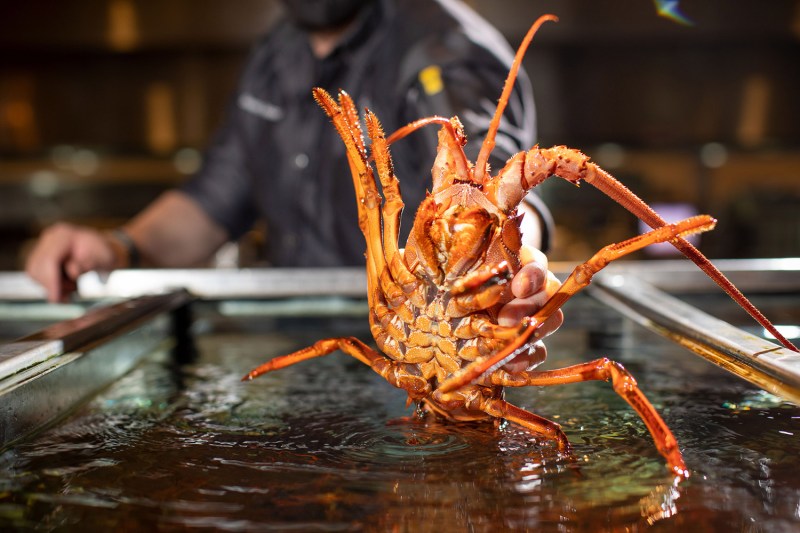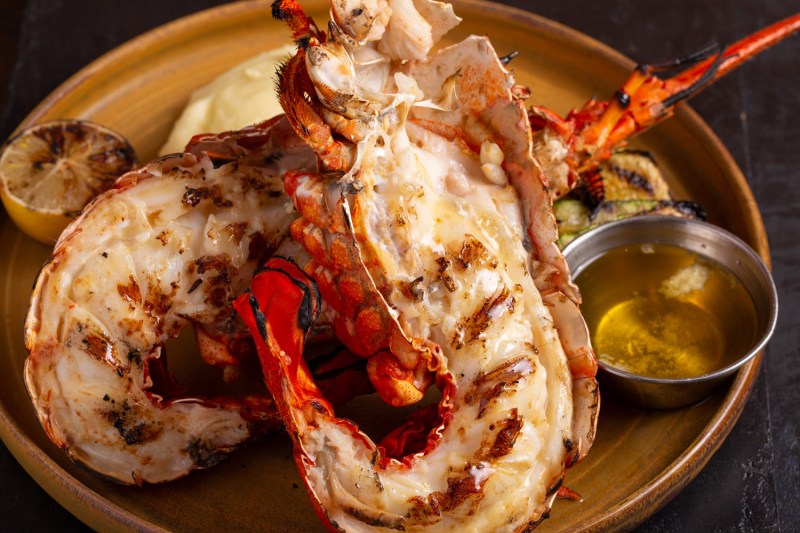Climate change has take a dramatic toll on the planet this year, impacting everything from crops to seafood. In the water, it’s been a particularly trying year, with low numbers shutting down everything from salmon runs to Alaska crab season. But it’s not all bad.
For those looking for a bit of seafood luxury, there are still some sound options, ranging from scallops and caviar to lobster. One crustacean that’s being harvested right now off the west coast is the California Spiny Lobster. This meaty bottom-feeder lacks claws, but makes up for it with a massive tail and an overall size that can reach 20 pounds.

Did we mention that they’re delicious? California’s oceanic delicacy is in full season, caught from October through March. Generally, they’re sweeter than Maine Lobsters, with more meat as well. They’re caught from Baja all the way up to Morro Bay and, at the moment, the population seems stable and the fishery in good shape. Fishers will use square traps baited with things like salmon heads to attract the lobster, or free dive and catch them by hand.
To get some more insights on this particular oceanic delicacy, we reached out to Fabrice Poigin, the culinary director at King’s Seafood Company. He says the Spiny Lobster population has been stable since the 1980s (and cites the California Ocean Protection Council for this). “It seems like there is no slowing down and this season looks just as good,” he says.
A big part of that is due to the significant sustainability efforts on behalf of the fishery at large. Poigin says it really started in 2004 with the Baja California red rock fishery, which achieved certification from the Marine Stewardship Council. “The Spiny Lobster stock is managed using several regulations designed to protect the spawning potential of Spiny Lobster,” he adds. “The current minimum size limit allows many lobsters to reproduce for one-to-two years before reaching the legal size limit.”
The seasonal closure from March through October helps too, protecting the critters during the spawning season. “Also, a harvest control rule was recently developed to provide an adaptive management framework that provides the department with flexibility to adjust the management approach as threats to the sustainability of the Spiny Lobster fishery are identified.”
How to cook them

At Poigin’s restaurants, they use a high-pressure steamer to speed up the cooking. Most of us lack one of those, but there are other ways. “I would simply prepare a court-bouillon using celery, onion, carrot, parsley, and a good quality vinegar but a large volume of salted water,” he says. A two-pound Spiny Lobster can be cooked in about 18-20 minutes, he says, and you can cut that time in half if you plan to grill them.
Poigin says the meat is firmer than their Atlantic brethren and with no claws, all the deliciousness is in the tail. He loves both versions but loves the length of the Spiny Lobster season (four solid months) as well as a bit more of that iodine flavor that he attributes to the lobsters’ home in warmer waters (compared to the east coast).
Oh, and be careful. “If you decide to cook the lobster at home, make sure to wear a glove while handling it, as its carapace can cut through the skin quite easily,” he adds.
What to look for when purchasing
“When purchasing a live lobster, make sure that it doesn’t come into direct contact with ice and should not be submerged in water,” Poigin says. You should be looking for the size you’re after and that the animal is alive.
“A spiny that has come out of the water should be moving quite a bit with its tail flapping aggressively,” he says. “Once dead, keep in the coldest compartment of your fridge over a platter as the meat inside the shell will slowly lose water and moisture.” Poigin says that Spiny Lobster will stay fresh for a couple of days.
While you’re out getting supplies, get your hands on a nice Chardonnay, dry Riesling, or Pinot Blanc, the wine will pair with the lobster nicely.


